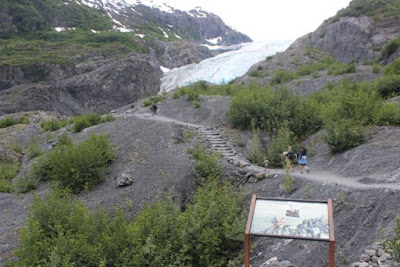 Gunnar Knapp
Gunnar Knapp has been an important participant in Alaska public policy as an economist at the Institute for Social and Economic Research (ISER) at the University of Alaska Anchorage. He's
studied any number of issues, but his focus was on fisheries. He became one of the world's experts on the economics of fisheries. This last year he's played an important role in presenting the facts of the Alaska budget in clear and understandable ways. I'm afraid that effort has been lost on the key players in the legislature. But a lot more Alaskans understand the seriousness of our problem and the most reasonable options for dealing with it, thanks to Gunnar's work.
While I never worked for ISER, there was a period of years when my office was in with the ISER faculty and staff. Not only were all the ISER faculty very sharp and very hard workers, but they got along with each other productively. Few of the ISER folks are naturally outgoing, but all had very high professional standards, they understood that they worked for the public, and they found ways to make each other do their best. Music was a common denominator. Many of the ISER faculty and staff are excellent musicians. Gunnar has a strong and beautiful singing voice (he's sung for the Anchorage opera) that sometimes floated through the office suites. I'm not sure he always was aware he was singing. You can see more about him
at this link.

The ISER faculty have always had the challenge of only being partially funded by the state. They
had to make up the rest of their salaries through contracting studies. This offered additional challenges - they had to be out soliciting work, yet they had to resist clients' desires for favorable outcomes. As university faculty, they had to publish work in academic journals while getting enough contracted work to get their salaries paid.
But their reputation for impartiality and technical excellence has made ISER one of the most respected and influential parts of the University of Alaska. The data they've collected over the years has played a vital role in understanding the state budget and economy, in understanding the welfare of Alaska's children, and understanding Alaska's fisheries, to name just a few areas.
And they are all thoroughly decent, caring people. Well, a few may not seem like they are, but once you get past their shyness, they are.
Steve Colt came to Alaska from MIT and has had an interest in energy across the state. You can get a sense of the many projects he's worked on at the link on his name. Steve said he'll be teaching full time at APU in the fall.
Today there was a retirement gathering at the UAA library for these two important Alaskans, and a number of notables were there. Vic Fisher, who created ISER some fifty years ago in Fairbanks. Lee Gorsuch, who took over from Vic and eventually became Chancellor at UAA. Scott Goldsmith, a professor emeritus from ISER. Lots of other important people were there - the staff that makes it possible for the researchers to get their work done and distributed, other faculty from ISER, former Regent Chancy Croft and former Borough manager Jack Roderick. I was able to get a few pictures, but I had a 5:30 commitment and since this event was scheduled until 5pm, I didn't pay attention to the time. It was close to 5:30 when the last speaker spoke. But I did try to catch a few faces.
 |
| Former ISER IT guy Jim Kerr juggles his tribute to Knapp and Colt |
ISER has a whole set of younger faculty who have come along over the years and have had the benefit of working with these faculty, so the tradition will carry on. ISER is one of the better known units at the university because so many of their reports are cited in public policy debates, yet the humanity and professionalism of this group is probably not well understood by the general public. But I can attest to the good work they do.
Here's a link to the list of ISER publications, most of which are available online. They've monitored so many important issues over the years.


















































